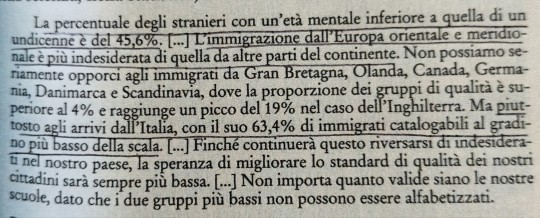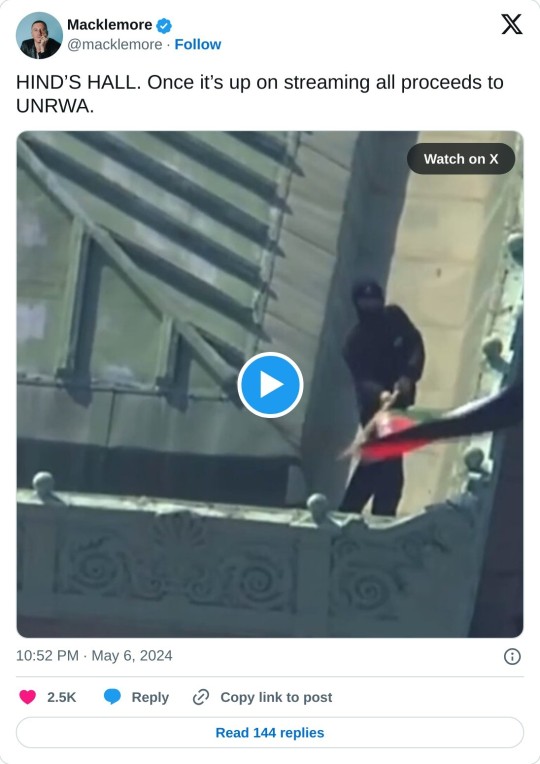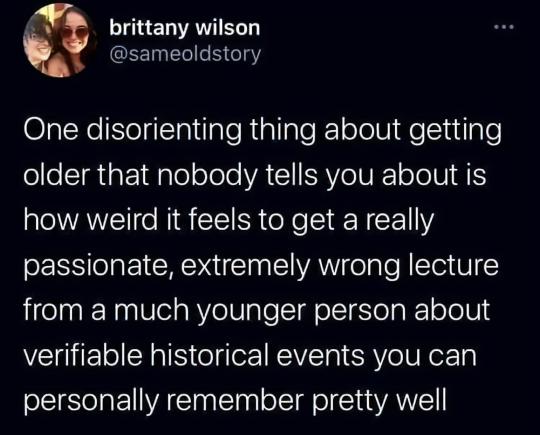#Contemporary history
Text
Hack-Tic issue 16/17 (1992)


Cover and first article of double issue 16/17 in the Dutch hacking zine Hack-Tic. The cover shows the magazine's titular name and descriptive subtitle, "Magazine for Techno-Anarchists". Underneath, an illustration most likely of the fictional band The Blues Brothers holding a TV or computer screen and a keyboard, surrounded by police pointing guns at them. In the bottom right is Hack-Tic's bearded mascot, who appears on every cover, here wearing a hat with a peace symbol on it. The first article is titled "Hacking The Pentagon ?", regarding a group of Dutch hackers who broke into American military systems.
Illustrated by Koen Hottentot (1992)
Source
37 notes
·
View notes
Note
Hey, what does disruptor mean? I saw it when looking at your answers. I’ve also seen people joke about it on twitter but I can’t find a meaning to it.
It's a term I personally loathe, but I'm willing to do some recent cultural/intellectual history to explain where it came from and what it means.
The term disruptor as it's commonly used today comes out of the business world, more specifically the high tech sector clustered in Silicon Valley. Originally coined as "disruptive innovation" by business school professor Clayton Christensen in the mid-to-late 90s, the idea was that certain new businesses (think your prototypical startup) have a greater tendency to develop innovative technologies and business models that radically destabilize established business models, markets, and large corporations - and in the process, help to speed up economic and technological progress.
While Christensen's work was actually about business models and firm-level behavior, over time this concept mutated to focus on the individual entrepeneur/inventor/founder figure of the "disruptor," as part of the lionization of people like Steve Jobs or Mark Zuckerburg or Elon Musk, or firms like Lyft, Uber, WeWork, Theranos, etc. It also mutated into a general belief that "disrupting" markets and, increasingly, social institutions is how society will and should progress.
I find these ideas repellant. First of all, when it comes to the actual business side of things, I think it mythologizes corporate executives as creative geniuses by attributing credit for innovations actually created by the people they employ. Elon Musk didn't create electric cars or reusable rockets, Steve Jobs didn't design any computers or program any OSes, but because they're considered "disruptors," we pretend that they did. This has a strong effect on things like support for taxing the rich - because there is this popular image of the "self-made billionaire" as someone who "earned" their wealth through creating "disruptive" companies or technologies, there is more resistance to taxing or regulating the mega-wealthy than would otherwise be the case.
Even more importantly, treating "disruptors" like heroes and "disruption" as a purely good thing tends to make people stop thinking about whether disruption to a given industry is actually a good thing, whether what tech/Silicon Valley/startup firms are doing is actually innovative, what the economic and social costs of the disruption are, and who pays them. Because when we look at a bunch of high-profile case studies, it often turns out to be something of a case of smoke and mirrors.
To take ridesharing as an example, Lyft and Uber and similar companies aren't actually particularly innovative. Yes, they have apps that connect riders to drivers, but that's not actually that different from the old school method of using the phone to call up a livery cab company. There's a lot of claims about how the apps improve route planning or the availability of drivers or bring down prices, but they're usually overblown: route planning software is pretty common (think Google Maps), when you actually look at how Lyft and Uber create availability, it's by flooding the market with large numbers of new drivers, and when you look at how they got away with low prices, it was usually by spending billions upon billions of venture capital money on subsidizing their rides.
Moreover, this "disruption" has a pretty nasty dark side. To start with, Lyft and Uber's business strategy is actually a classic 19th century monopoly strategy dressed up in 21st century rhetoric: the "low prices" had nothing to do with innovative practices or new technology, it was Lyft and Uber pulling the classic move of deliberately selling at a loss to grab market share from the competition, at which point they started raising their prices on consumers. Availability of drivers was accomplished by luring way too many new drivers into the labor market with false promises of making high wages in their spare time, but when the over-supply of drivers inevitably caused incomes to decline, huge numbers of rideshare drivers found themselves trapped by auto debts and exploited by the companies' taking a significant chunk of their earnings, using the threat of cutting them off from the app to cow any resistance. And above all, Lyft and Uber's "disruption" often came down to a willful refusal to abide by pre-existing regulations meant to ensure that drivers could earn a living wage, that consumers would be protected in the case of accidents or from the bad behavior of drivers, etc.
As a policy historian, however, I find the extension of "disruption" into social institutions the most troubling. Transportation, health care, education, etc. are absolutely vital for the functioning of modern society and are incredibly complex systems that require a lot of expertise and experience to understand, let alone change. Letting a bunch of billionaires impose technocratic "reforms" on them from above, simply because they say they're really smart or because they donate a bunch of money, is a really bad idea - especially because when we see what the "disruptors" actually propose and/or do, it often shows them to be very ordinary (if not actively stupid) people who don't really know what they're doing.
Elon Musk's Loop is an inherently worse idea than mass transit. His drive for self-driving cars is built on lies. Pretty much all of the Silicon Valley firms that have tried to "disrupt" in the area of transportation end up reinventing the wheel and proposing the creation of buses or trolleys or subways.
Theranos was a giant fraud that endangered the lives of thousands in pursuit of an impossible goal that, even if it ould have been achieved, wouldn't have made much of a difference in people's lives compared to other, more fruitful areas of biotech and medical research.
From Bill Gates to Mark Zuckerburg, Silicon Valley billionaires have plunged huge amounts of philanthropy dollars into all kinds of interventions in public education, from smaller classrooms to MOOCs to teacher testing to curriculum reform to charter schools. The track record of these reforms has been pretty uniformly abysmal, because it turns out that educational outcomes are shaped by pretty much every social force you can think of and educational systems are really complex and difficult to measure.
So yeah, fuck disruptors.
109 notes
·
View notes
Photo




Memory Box (Joana Hadjithomas, Khalil Joreige - 2021)
#Memory Box#Lebanon#Beirut#drama film#Canada#war#Joana Hadjithomas#Khalil Joreige#Rim Turki#Manal Issa#Lebanese civil war#Paloma Vauthier#Montreal#teenagers#XX century history#memories#notebooks#tapes#1980’s#contemporary history#adolescence#photos#photo stories#guerre civile libanaise#guerre du Liban#hidden past#reality#introspection#imagination#photographs
21 notes
·
View notes
Text
history lover with absolutely no concept of time
#university#college#english major#ancient history#historyblr#adhd#timeline#history#history memes#victorian history#contemporary history#20th century#19th century#18th century
28 notes
·
View notes
Photo

Even though she is smiling, this girl had just been wrongfully sentenced to 20 years of hard labor in a prison camp by the South Vietnamese government.
Her name is Võ Thi Thang, a Vietnamese revolutionary. What really strikes me is not the photo itself, but what she said after being sentenced:
"20 years? His rule will not last that long."
The photo became popularly known as the "Smile of Victory," a symbol of Vietnamese women who fought in the Vietnam War.
She was released 6 years later.
[Vo Thi Thang - Wikipedia)
8 notes
·
View notes
Photo


This is Roque Peralta, he was 27 years old when he was killed by the Guardia Civil (Spanish military police), on the 12th of July 1977.
Roque lived in Manresa, a city in Central Catalonia, where he was married and had two children. On June 12th, he went to visit his brothers in Súria, a nearby village, during its local festivity (festa major). That year, the organisers of the festivity’s dance had taken the decision that there would be a dress-code for the attenders: men had to wear a cravat and women had to wear an evening dress.
Of course, people were not happy with this decision that took away their freedom of choice and that repressed them from having fun and being comfortable, in a way that’s both sexist and classist at the same time, and which the locals believed to contradict the popular soul of the festivities. For this reason, before the beginning of the dance, a group of about 150 young people came together in the entrance of the dance to protest. The number of protesters grew during the dance, and more policemen were called, who came branding CETME rifles (the assault rifles used by the Spanish army).
One of the witnesses, Pere Subirà, describes what happened next:
When the second part of the dance started, the sargent [of the Guardia Civil] ordered the officers to disperse the rally. Until that moment, we had been joking with the guardian at the door but, when he heard the order, he changed his attitude.
When the policeman had his weapon charged, he saw Roque. He hit him with the rifle while cornering him against the wall of a house. Roque had a disabled arm and, with the other arm, he was trying to move the policeman away from him. When the boy was against the wall, the policeman shot. (Source)
According to the official version released by the police, Roque had tried to take the policeman’s weapon, but this was denied by all the witnesses and seems to be a lie used to justify killing him. The policeman later proved to have been lying about this because he continued to distance himself from the act through contradicting statements, even saying that he wasn’t there that night (when all the Guardia Civil’s documents prove he was).
Even though Roque’s family sued the policeman, there was never a trial. The only consequence for the policeman Francisco Ruiz for having killed him was that he was moved to serve in another town. It was not the first time that he had been moved because of an “incident”.
The next day, all of Súria was on strike (only bakeries were open to sell bread). There was a demonstration, where people carried a Catalan flag with a black crepe and a banner that read “Guardia Civil murderer” (“Guardia Civil assassina”). The next day, between 2,500 and 5,000 people attended Roque’s funeral.
Roque was one of the many victims of violence from the police or fascist groups during the “Transition to democracy” that Spanish politicians always say was “bloodless” and “exemplary”.
#roque peralta#roque peralta sánchez#història#transició#1970s#police brutality#police violence#recent history#working class history#contemporary history#acab#guardia civil#súria#manresa#catalunya
49 notes
·
View notes
Text
a brief summary for English-speakers:
back in Ancient Rome, Caligola had two ships built in Lake Nemi to host the cult of goddess Isis (I have already discussed this in my post about Diana and Nemi). both crafts eventually sinked, and it took hundreds of years to successfully get them out.
it took three years to get them out, from 1929 to 1931. very unluckily, though, the ships were lit on fire in 1944, during WWII. many speculations surrounded the accident: some folks believed that a couple of kids were responsible, others would claim that it had been the Germans trying to escape.
the mystery has now been solved, apparently, thanks to archaeologist Flavio Altamura and historian Stefano Paolucci. after analysing the evidence carefully, it was discovered that the American army had bombed the museum where the ships were held to destroy a German settlement, filled with weapons.
#roman paganism#roman polytheism#roman pantheon#religio romana#cultus deorum#roman polytheist#paganism#ancient roman religion#roman pagan#roman religion#world war ii#world war 2#history#ancient rome#contemporary history
4 notes
·
View notes
Text


June 28, 2022
Well, guess who finally passed their Contemporary History exam after three semesters of postponing! That's right, you'll never have to read of me ranting about it again – except for a few really nice old pics I'd like to share with you in the next days. Figured I'd show the result of the renown cathartic process of sticky notes removal – and those are just half? two-thirds? of them! I find it quite fascinating that they protected part of the book pages from yellowing under the sun, and created a pattern that even fades the more recent the notes were. I like the fact that it's a part of the book's story that will stay with it forever :)
#studyblr#study blog#bookblr#books#studying#contemporary history#history studyblr#history student#uniblr#uni student#undergrad student#study aesthetic#uni life
42 notes
·
View notes
Text

Flowers series abstract painting by Gela Mikava
mixed media on canvas
100X80cm
ყვავილების სერია
შერეული ტექნიკა ნარმას ტილოზე
100X80სმ
#modern art#contemporary art#artistic#artwork#artists on tumblr#my art#flowers#abstracart#abstract#abstractart#contemporary history#contemporary#contemporaryart#art contemporain
4 notes
·
View notes
Text
Sono sempre più convinta della necessità di insegnare la storia dell'immigrazione italiana a chiunque per vedere se la gente fosse in grado di sviluppare un minimo di pensiero critico riguardo a quello che partiti come la Lega o FdI dicono loro

9 notes
·
View notes
Text
Plastics are the living dead
"Not only are the lifespans of plastic products often extremely short, synthetic polymers, derived from oil, are a kind of living dead among us. After digging up the remains of ancient plants and animals, we are now stuck with the consequences of these undead molecules, the ones that refuse to interact with other carbondependent life forms. For although plastics photodegrade and break apart, they do not biodegrade. That is, the pieces may get smaller and smaller, but they do not turn into something else. They do not go away. The molecules themselves remain intact, holding onto their identity."
Davis, Heather. "Life & death in the Anthropocene: A short history of plastic." Art in the anthropocene: Encounters among aesthetics, politics, environments and epistemologies (2015): 347-358, 352.
2 notes
·
View notes
Text

Hind Rajab was a 5 year old girl in Gaza who was killed while she hid alone in a car, along with the paramedics who tried to rescue her. Yesterday students at Columbia seized the administration building and renamed it in her honor.
Gadzooks Bazooka Instagram: gadzooks_bazooka
Remembering #HindRajab & children in #Gaza: This is what the mother of the child, Hind Rajab . https://tmblr.co/ZTeZMyfB_GHeeu00
UPDATE FROM
@sunnydice: (and please don't forget Layan Hamadeh
, her 15 yr old cousin who was trapped with her or Yusuf Zino and Ahmed Al-Madhoun who bravely volunteered to try to save hind and were murdered by the IOF )
DrSonnet — هذا ما قالته والدة الطفلة هند رجب عندما سمعت بخبر... (tumblr.com)



#هند رجب#جامعة كولومبيا#hind rajab#genocide#gaza#student protest#college protests#harvard#jerusalem#tel aviv#Israel#BDS#WAR ON GAZA#free palestine#PALESTINE NEWS#UCLA#nyc#NYPD#friday#Good Friday#FREE#art#artist#contemporary art#history#world history#columbia university#protests#Palestine#WAR
28K notes
·
View notes
Photo






Memory Box (Joana Hadjithomas, Khalil Joreige - 2021)
#Memory Box#Lebanon#Beirut#drama film#Canada#war#Joana Hadjithomas#Khalil Joreige#Rim Turki#Manal Issa#Lebanese civil war#Paloma Vauthier#Montreal#teenagers#XX century history#memories#notebooks#tapes#1980’s#contemporary history#adolescence#photos#photo stories#guerre civile libanaise#guerre du Liban#hidden past#reality#introspection#imagination#photographs
17 notes
·
View notes
Text
"Although these developments may surprise foreigners used to thinking of Germany as a democratic success story, they have developed from longstanding characteristics of the postwar German state. The Federal Republic always placed strict limits on the amount and kind of democracy to which its citizens would have access, erecting powerful guardrails on the rights of citizens to organize politically, assemble in public, and express their views. At the same time, the bond between Israel and Germany, which began in the first decade after World War II, has only strengthened over the years, calcifying into the received knowledge that Israel’s security is Germany’s Staatsräson. These lessons of the Nazi era are perhaps the reason that the German political establishment has fallen in behind Benjamin Netanyahu’s campaign in Gaza, even as a majority of German voters report thinking that Israel’s response “goes too far.” But so long as the government shuts out dissenting voices, it is unlikely that anything will change."
-- Samuel Clowes Huneke, What’s the Matter with Germany?
#an excellent analysis providing historical context#germany#democracy#current events#contemporary history#r/#readings#politics#authoritarianism#militarism#civil rights#palestine#israel
1 note
·
View note
Photo

The infamous headhunters,Nias warriors,from Nias island off the west coast of North Sumatra, Indonesia.Circa 1900
3 notes
·
View notes
